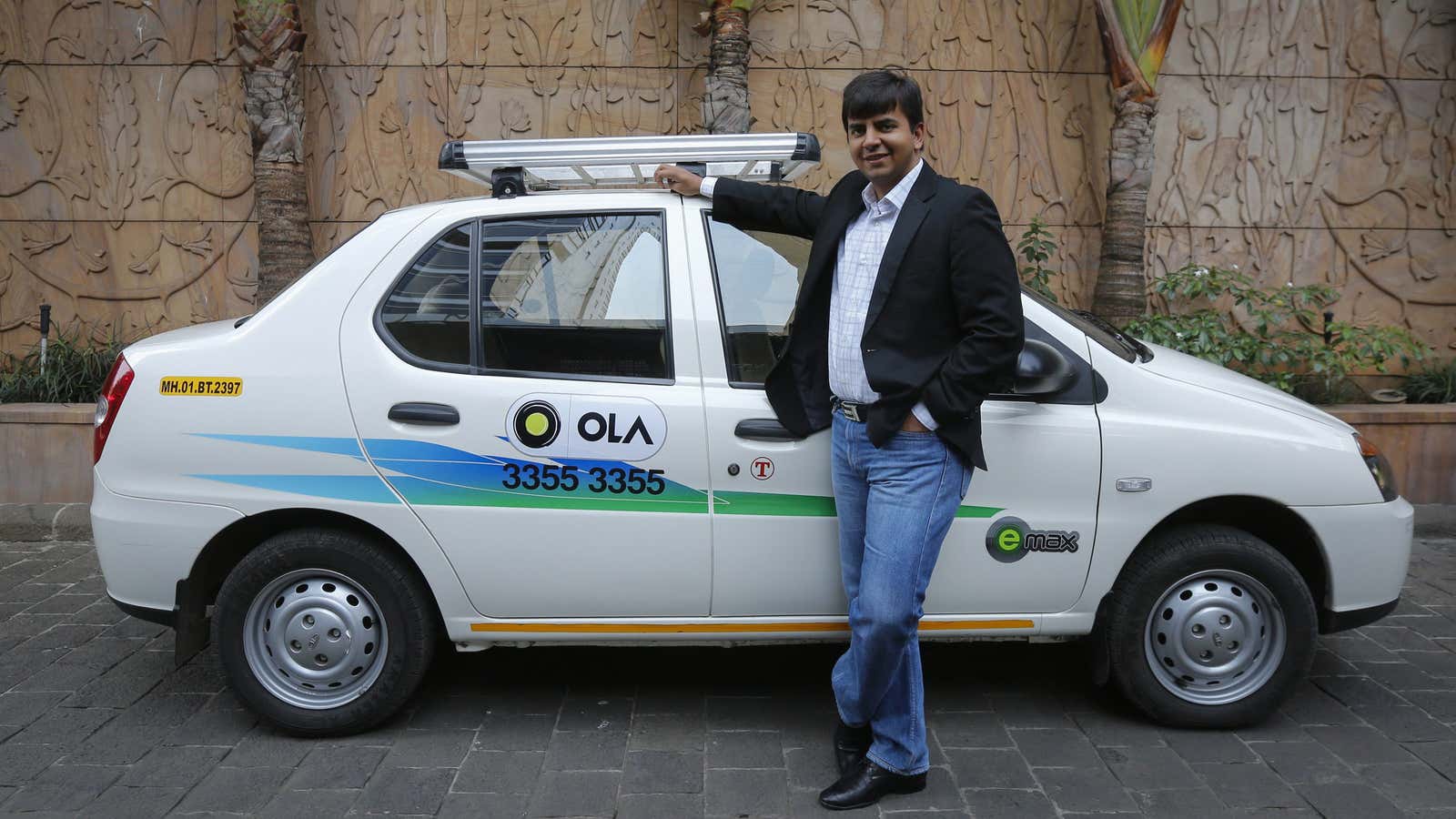One of India’s most prominent unicorns can’t stop re-assessing its acquisitions.
In 2015, almost 18 months after Bengaluru-based Ola acquired rival TaxiForSure (TFS) for an estimated $200 million (then Rs1,200 crore), the latter was shuttered and up to 1,000 of its employees reportedly asked to go.
And that’s not the only high-profile acquisition where Ola has failed to bring in synergies. Last week, the company almost did an encore with Foodpanda, the food-delivery venture it acquired in December 2015 in a $200-million, all-stock deal.
The Softbank-backed company reportedly laid off 40 Foodpanda employees and 1,500 delivery executives and delisted third-party eateries on its site to turn its attention to private brands. In December 2018, Foodpanda had operations in over 100 cities and listed more than 60,000 restaurants.
“As part of our ongoing business re-purposing initiatives, we are focused on building a portfolio of own food brands and curated food offerings through our fast expanding network of kitchens,” a company spokesperson told Quartz. “We continue to invest in expanding our facilities and kitchens, as well as our portfolio of food offerings for customers.”
Currently, Ola owns private kitchens like The Great Khichdi Experiment, Lovemade, FLRT brands, and Holachef.
“This is not something that makes sense for any acquirer unless they want to eliminate and kill competition, which is not the case with Foodpanda,” said Harish HV, an independent analyst tracking India’s startup sector. “In my understanding, Ola acquired Foodpanda to get a quick entry into the food delivery space to compete with Uber Eats but both are facing challenges from players like Swiggy and Zomato, which are very well entrenched in the space and have top of the mind consumer recall.”
Succumbing to competition
Ola is among the most heavily funded Indian internet ventures, so funds for acquisitions have never been a challenge for the company. Having raised a total of $3.8 billion, the nine-year-old company has made at bought over at least five firms, according to online startup database Crunchbase.
So far, these moves have mostly focussed on enhancing its transport business, including growing its taxi fleet or buying a transport ticketing app or enhancing geo-tracking.
Foodpanda was one exception as it did not enhance Ola’s core business. It was a bet Ola had taken on an allied business. Folding it up “shows strategic confusion and increased competition (for Ola),” Yugal Joshi, vice-president at Texas-based consultancy Everest Group, told Quartz. “The good thing is Ola is learning from its market experience and willing to take hard decisions which is an indication of a mature company.”
Four years ago, too, the company had launched food-delivery service Ola Cafe in a handful of metro cities, but the business was shut down within a year due to poor performance. And its attempt at hyperlocal grocery delivery with Ola Store was a dud, too.
Running a food-delivery business in India is not easy right now as the sector is flooded with deep-pocketed incumbents.
The sector is led by four-year-old Swiggy, which is backed by Chinese food-to-flights startup Meituan Dianping, followed by nearest rival Zomato, whose investors include Ant Financial, an affiliate of China’s Alibaba Group, and Sequoia Capital.
Last October, Uber Eats, the food-delivery arm of the American ride-hailing venture, said India was its fastest growing market. In mid-May, Amazon invested in restaurant delivery business Deliveroo in the UK, signalling that it could do something similar in India, too, Joshi said.
To survive in this competitive market, Ola would need to make significant investments into food delivery, which might not be the best bet since the company is racking up thousands of crores in losses. For a secondary business like food-delivery, Ola cannot afford to burn cash the way Zomato and Swiggy do, experts said.
“Net-net, the business will become increasingly challenging and with Ola setting its priorities to expand outside India it would need all the organisational muscle and focus to drive this strategy,” he said. Ola launched ride-hailing operations in the UK, Australia and New Zealand in the last few years.
Cloudy with a chance of private labels
There might be some merit to the new strategy that Ola has adopted for Foodpanda, experts believe.
India’s online food-delivery industry is estimated to be worth up to $2.5 billion by 2021. And cloud kitchens seem to be the way to go when it comes to creating a differential beyond just listing out restaurants that are also available on rivals’ platforms.
“These hi-spec kitchens are usually in inexpensive locations and use data to optimise low overheads and increase output, making them highly efficient and as a result way more affordable and accessible,” said Sandeep Murthy, partner at Lightbox VC and an early investor in online kitchen brand Faasos.
Food-delivery players have long relied on heavy discounting to acquire and retain customers but the strategy shreds profit margins a lot. “Focusing on private label kitchens only, Foodpanda can generate higher profit margins of around 40%-45%, which the company used to divide earlier with restaurant partners,” said Sukriti Seth, consultant at Noida-based TechSci Research. Even market leader Swiggy has two private label kitchens: The Bowl Company and Homely.
And to broaden its reach, Ola even plans to open physical outlets via Foodpanda for private label kitchens and list them on the more successful food delivery apps such as Zomato, Swiggy, and Dunzo. After all, you know what they say—if you can’t beat them, join them.
